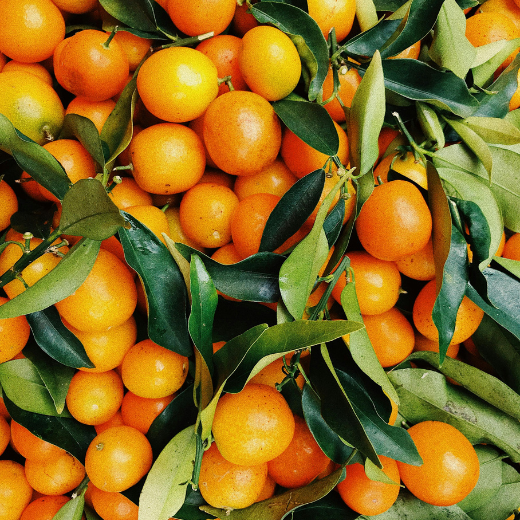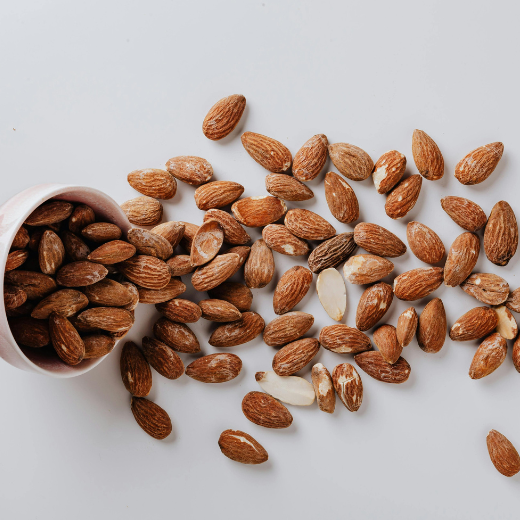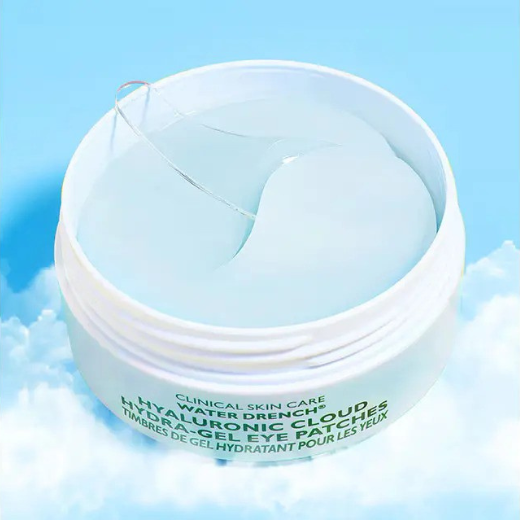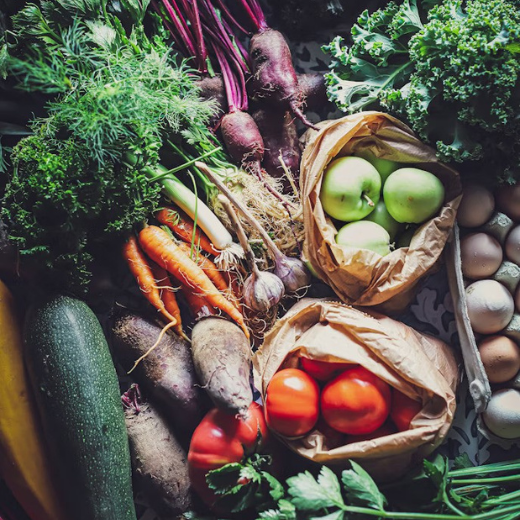7 Foods Loaded With Hyaluronic Acid For Youthful Radiance
Posted by Ellie Swain on Feb 3rd 2023
Updated October 2025
If you're a beauty buff, chances are you've already heard about the plumping, deeply moisturizing super ingredient for the skin—hyaluronic acid. This molecule is necessary for skin cell renewal, improving elasticity, boosting collagen production, and keeping your skin looking firm, soft, and smooth.
You may assume that hyaluronic acid is only available bottled in lotions and potions, but here's the thing: it's also naturally found in your body's tissues. Better yet, certain foods with hyaluronic acid aren't just high in this powerhouse ingredient but actually help boost its production in your body, so your skin remains supple and glowing.
Keep reading to discover these wonder foods. The next time you browse the supermarket for lunch or dinner, be sure to add these items to your cart.
Root Vegetables High in Hyaluronic Acid
Root vegetables like turnips, carrots, potatoes, and onions are all rich sources of hyaluronic acid. What food has the most hyaluronic acid? While bone broth typically tops the list, these underground gems pack a serious punch when it comes to supporting your skin's natural HA production.
For example, potatoes are among the best foods with hyaluronic acid. And yes, while they may be starchy, they're also brimming with vitamin C, potassium, magnesium, fiber, and antioxidants. Plus, they taste heavenly roasted with plenty of olive oil and garlic—yum.
Tuck into these vegetables regularly to help your body produce natural hyaluronic acid to keep your skin looking fabulous.
Citrus Fruits That Boost Hyaluronic Acid
Citrus fruits are great for your overall health and play a significant role in supporting your body's hyaluronic acid levels. Which fruit is rich in hyaluronic acid? While fruits don't contain HA directly, citrus varieties are loaded with vitamin C, which is essential for your body to produce both collagen and hyaluronic acid.
Chow into fruits like grapefruits, oranges, tomatoes, and bananas for soft, beautiful skin. You can even try whizzing several fruits together to make a delicious juice to sip on. Think of it as a facial in a glass—refreshing and effective.

Leafy Green Vegetables for Natural Hyaluronic Acid
It's time to eat your greens, as leafy vegetables are an excellent natural way to support hyaluronic acid benefits in your body. These healthy foods flush out toxins and give it the essential nutrients to keep your skin looking smooth.
High in protein, fiber, and various brain-enhancing vitamins, kale is renowned as a 'superfood'. And guess what? Kale contains magnesium and other nutrients that support hyaluronic acid production to improve the look of your skin too.
For a fun and easy way to eat kale, rub olive oil, lemon juice, and salt and pepper into the leaves and enjoy as a quick snack. The massaging action breaks down the tough fibers, making it surprisingly palatable.
Soy Products Rich in Hyaluronic Acid
Soy and soy products are brimming with hyaluronic acid. Why not throw some tofu into a stir-fry with a few veggies, toss it into a salad, or nibble on a few pieces as a snack to up the hyaluronic acid levels in your body?
Is eating hyaluronic acid good for you? Absolutely. When you consume foods with hyaluronic acid or the nutrients that boost its production, you're supporting your body's natural collagen synthesis, joint health, and your skin's moisture retention from the inside out. Soy is particularly effective because it also contains phytoestrogens that help counteract some of the hormonal changes that deplete HA as we age.
Adding soy-based foods to your diet is one of the easiest ways to increase your intake of hyaluronic acid naturally.
Almonds and Nuts High in Hyaluronic Acid
For a healthy snack, grab a packet of almonds. Not only are almonds high in protein, fiber, potassium, healthy fats, calcium, and vitamin E, but their nutrient profile can make a clear difference in your skin's ability to produce hyaluronic acid.
The same goes for cashews, so stock up on your nut butters for your breakfast toast. Which nuts are high in hyaluronic acid? While nuts don't contain HA directly, almonds and cashews provide the zinc, magnesium, and healthy fats your body needs to synthesize it effectively. These portable snacks are perfect for maintaining your skin's hyaluronic acid levels throughout the day.

Bone Broth: The Ultimate Hyaluronic Acid Food
It doesn't sound too appealing, but bone broth is full of hyaluronic acid to help improve the look of your skin. A bone broth made from many animal parts is sure to benefit your complexion and ranks among the top foods with hyaluronic acid.
As the bones are simmered in water over 24 hours, it leaches nutrients like hyaluronic acid from the bones and connective tissues, infusing them into the water. The result is essentially liquid gold for your skin and joints. Bone broth for dinner, then?
What animal does hyaluronic acid come from? In supplement form, it's often derived from rooster combs or created through bacterial fermentation. In bone broth, it comes naturally from the connective tissues of beef, chicken, or fish bones.
Best Foods with Hyaluronic Acid: Quick Reference
Here's your shopping list for foods highest in hyaluronic acid and HA-boosting nutrients:
- Bone broth (highest direct source)
- Soy products (tofu, edamame, tempeh)
- Root vegetables (potatoes, carrots, onions)
- Citrus fruits (oranges, grapefruits, lemons)
- Leafy greens (kale, spinach)
- Nuts (almonds, cashews)
- Bananas (rich in magnesium)
Understanding What Depletes Hyaluronic Acid
Before you stock up on all these foods with hyaluronic acid, it's worth understanding what works against you. What depletes hyaluronic acid in the body? Several lifestyle factors accelerate HA loss: excessive sun exposure (the biggest culprit), smoking, pollution, poor diet, chronic stress, and the natural aging process. Free radicals from UV rays are particularly destructive, which is why wearing SPF daily is non-negotiable if you care about maintaining your skin's hyaluronic acid levels.
The good news? By eating foods rich in hyaluronic acid and protecting your skin from environmental damage, you're giving your body the best possible foundation for maintaining those HA levels.
Hyaluronic Acid Products to Enhance Your Routine
Want a little extra help? As well as eating the right foods with hyaluronic acid, there are plenty of serums and beauty products containing this ingredient to enhance the appearance of your complexion. The key is combining dietary sources with quality topical products for a comprehensive inside-out approach.
What is the best form of hyaluronic acid? The honest answer is all of them, used strategically. Dietary sources provide systemic benefits, topical serums deliver immediate surface hydration, and targeted treatments can address specific concerns.
Serums That Deliver
The Hydrinity Renewing HA Serum delivers injectable-grade hyaluronic acid in a topical formula. This isn't your average drugstore serum—it's formulated with proprietary technology that enhances penetration and effectiveness. The lightweight texture makes it ideal for all skin types, including oily or acne-prone skin that needs moisture without heaviness. Use morning and night for skin that looks perpetually hydrated.
Targeted Eye Treatments
The delicate eye area deserves special attention. PCA SKIN Hyaluronic Acid Microneedle Eye Patches use dissolvable microneedles to deliver hyaluronic acid deeper into the skin than traditional patches. It's skincare innovation at its finest—minus any discomfort.
For a luxurious alternative, Peter Thomas Roth Water Drench Hyaluronic Cloud Hydra-Gel Eye Patches provide cooling, soothing hydration that visibly reduces puffiness and fine lines. Keep them in your fridge for an extra refreshing treat.

Intensive Overnight Treatment
When your skin needs serious intervention, the PCA SKIN Hyaluronic Acid Overnight Mask works while you sleep, delivering concentrated hydration over several hours. Wake up to skin that looks like you've had a professional facial—no appointment necessary.
For a spa-like experience at home, the Hydrinity Restorative HA Masque provides salon-level results in a convenient single-use format. Perfect for those nights when your skin needs a little extra love.

Supplements for Internal Support
While dietary sources should be your foundation, Elemis Pro-Collagen Skin Future Supplements offer a convenient way to support collagen and hyaluronic acid from within. These supplements combine marine collagen with skin-supporting nutrients for a comprehensive inside-out approach. Just remember that supplements are there to assist you with extra nutrition and shouldn't be used as a replacement for eating foods with hyaluronic acid.
Frequently Asked Questions About Foods with Hyaluronic Acid
What food has the most hyaluronic acid? Bone broth contains the highest concentration of hyaluronic acid, as it's extracted directly from animal bones and connective tissues during the long simmering process. Soy products and root vegetables also rank high on the list.
Which fruit is rich in hyaluronic acid? While fruits don't contain hyaluronic acid directly, citrus fruits like oranges and grapefruits are rich in vitamin C, which is essential for your body to produce hyaluronic acid naturally. Bananas also support HA production through their magnesium content.
Is eating hyaluronic acid good for you? Yes, consuming foods with hyaluronic acid supports skin hydration, collagen production, joint health, and overall skin elasticity. It works from the inside out to maintain your body's natural HA levels.
Which nuts are high in hyaluronic acid? Almonds and cashews don't contain HA directly but provide zinc, magnesium, vitamin E, and healthy fats that your body needs to produce hyaluronic acid effectively.
What depletes hyaluronic acid in the body? Sun exposure, smoking, pollution, poor diet, chronic stress, and aging all deplete hyaluronic acid levels. Protecting your skin with SPF and eating HA-rich foods helps counteract this depletion.
What is the best form of hyaluronic acid? A combination approach works best: eating foods with hyaluronic acid for systemic benefits, using topical serums for immediate hydration, and considering supplements for additional support when needed.
The Bottom Line
Foods with hyaluronic acid aren't just another wellness trend—they're a fundamental component of healthy, resilient skin. The most effective approach combines dietary sources with quality topical products for results that work from the inside out.
Start your day with a vitamin C-rich smoothie, snack on almonds mid-morning, and include plenty of vegetables with lunch and dinner. In your skincare routine, apply a hyaluronic acid serum to damp skin—this maximizes its moisture-binding abilities—then seal it in with a quality moisturizer.
Remember that consistency matters more than perfection. You don't need to eat bone broth daily or apply seventeen different products. Choose a few foods with hyaluronic acid that you genuinely enjoy, incorporate them regularly, and find one or two quality topical products that work for your skin type and budget.
Ready to transform your skin from the inside out? Start with your next meal. Load your plate with colorful vegetables, add a handful of nuts, and maybe experiment with that bone broth recipe you've been eyeing. Your skin at forty, fifty, and beyond will thank you for the foundation you're building today.

